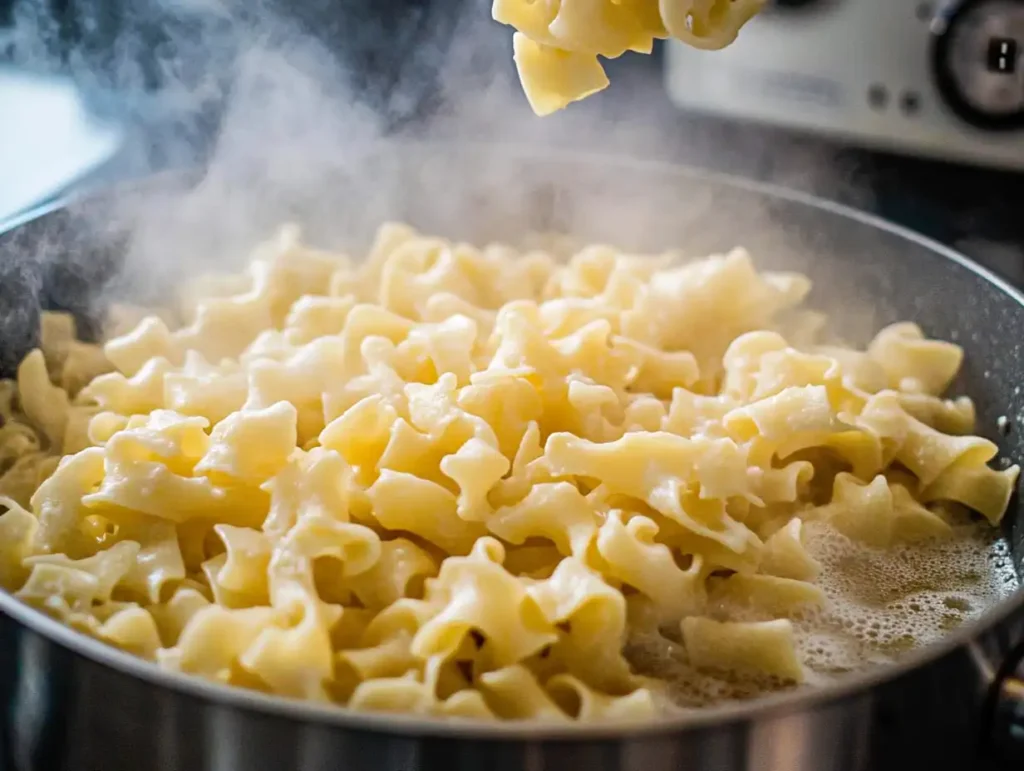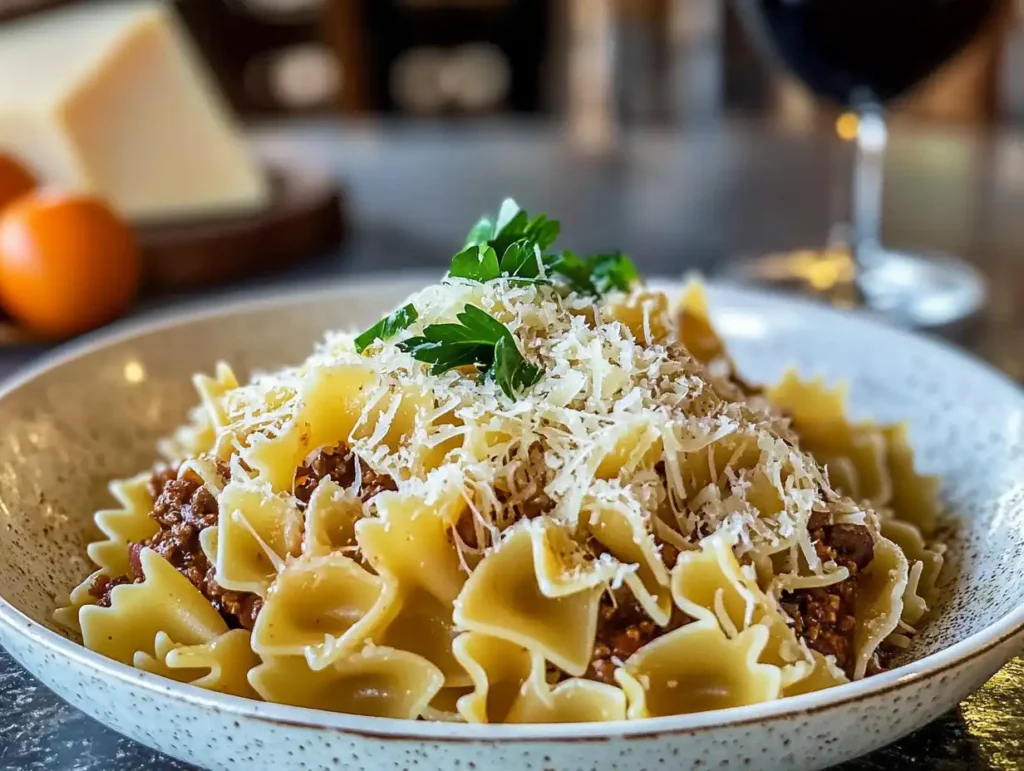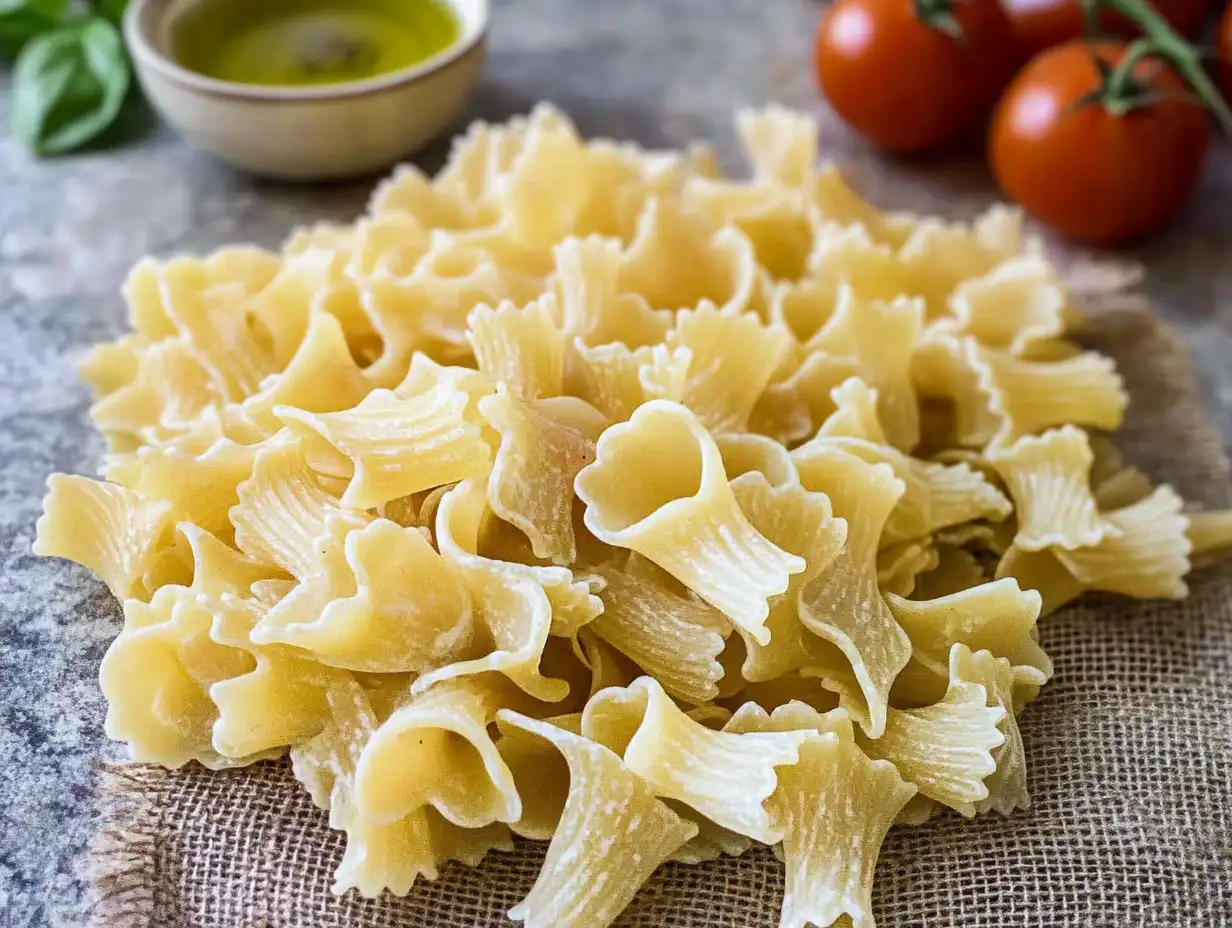Introduction
Gigli pasta, also known as “campanelle,” is a unique type of Italian pasta celebrated for its artistic shape and rich cultural roots. But what is the meaning of gigli pasta? The name “Gigli” translates to “lily” in Italian, reflecting its flower-like design that adds elegance to any dish. Originating in Italy, particularly Tuscany, gigli pasta has gained worldwide acclaim for its versatility, pairing seamlessly with an array of sauces and recipes. Beyond its aesthetic appeal, what is the meaning of gigli pasta for Italian culture? It represents a fusion of art, symbolism, and gastronomy.
The Origin of Gigli Pasta
Historical Roots
The origins of gigli pasta can be traced to Tuscany, a region renowned for its culinary artistry. This pasta shape was designed to embody the region’s cultural identity, paying homage to the iconic lily flower that symbolizes Florence, Tuscany’s capital.
Meaning Behind the Name
The term “gigli” directly translates to “lily” in Italian. The pasta’s intricate design mimics the elegant folds of a blooming lily, making it a visual delight that stands apart from traditional pasta shapes.
Symbolism of the Lily
In Italian culture, the lily is more than just a flower; it represents purity, prosperity, and renewal. Its presence in gigli pasta underscores its symbolic importance, marrying art and gastronomy in a single dish.
Characteristics of Gigli Pasta
Shape and Texture
Gigli pasta boasts a distinct flower-like appearance, with its delicate ruffled edges curling outward in a cone shape. This intricate design not only makes it visually appealing but also provides a functional benefit—its grooves and folds are perfect for holding sauces, ensuring every bite is flavorful. The texture is typically firm yet tender, ideal for maintaining its structure when cooked al dente.
Ingredients and Composition
Traditionally, gigli pasta is made from durum wheat semolina and water, giving it a robust structure and a slightly nutty flavor. Some variations may include eggs, enhancing its richness and making it more versatile for elaborate dishes. Artisanal producers often use high-quality, locally sourced ingredients, while commercial brands may incorporate additional stabilizers or coloring agents to ensure consistency.
Variations in Production
Gigli pasta is available in both handmade and machine-produced forms. Artisanal gigli pasta is often crafted using traditional bronze dies, which give the pasta a rough surface that clings to sauces better. Industrially produced gigli is smoother and more uniform in appearance, catering to mass-market consumption. Additionally, colored gigli pasta—infused with spinach, beetroot, or squid ink—is increasingly popular, adding a visual and flavorful twist to the classic version.
How to Cook Gigli Pasta

Cooking Techniques
Cooking gigli pasta to perfection requires attention to detail. Start by bringing a large pot of salted water to a rolling boil. Add the pasta and stir occasionally to prevent clumping. Most gigli pasta cooks within 8 to 12 minutes, depending on the brand and desired texture. For a perfect al dente bite, taste the pasta a minute or two before the recommended cooking time.
Pairing Gigli Pasta with Sauces
The unique shape and texture of gigli pasta make it a versatile choice for various sauces. Cream-based sauces like Alfredo or carbonara cling beautifully to its ruffled edges, while robust tomato-based sauces like marinara or arrabbiata seep into its folds for an explosion of flavor. For a lighter option, pair it with olive oil, garlic, and fresh herbs.
Common Gigli Pasta Recipes
Gigli pasta shines in both simple and elaborate dishes. Some popular recipes include:
- Gigli with Pesto: A classic combination of gigli pasta and freshly made basil pesto.
- Creamy Mushroom Gigli: Rich and savory, this dish combines gigli pasta with sautéed mushrooms and a creamy Parmesan sauce.
- Seafood Gigli: A Mediterranean favorite, pairing the pasta with shrimp, mussels, and a light tomato sauce.
Nutritional Value of Gigli Pasta
Caloric Content
Gigli pasta is a moderate-calorie food, with approximately 200-220 calories per 2-ounce (56g) serving of dry pasta. The calorie count can vary depending on additional ingredients, such as eggs or enriched flours, used in its preparation. When paired with nutrient-dense sauces and proteins, gigli pasta can serve as a hearty and balanced meal.
Macronutrients
A standard serving of gigli pasta contains:
- Carbohydrates: About 40-45 grams, providing a reliable energy source.
- Protein: Around 7-8 grams, depending on whether it’s made with eggs or just semolina.
- Fats: Minimal fat content unless enriched; this makes it a lean option for meals.
Gigli pasta is naturally cholesterol-free unless prepared with eggs, making it a suitable choice for those monitoring cholesterol intake.
Dietary Benefits
As a slow-digesting carbohydrate, gigli pasta provides sustained energy, making it ideal for physically active individuals. It’s also a source of B vitamins and iron, particularly when made from whole-grain or enriched semolina. Additionally, its versatility allows it to be paired with fiber-rich vegetables and lean proteins, enhancing its nutritional profile.
Cultural and Culinary Uses

Regional Dishes
In Tuscany, gigli pasta is celebrated in traditional dishes that reflect the region’s culinary heritage. It’s commonly paired with rich meat ragùs, such as wild boar or lamb, which complement its sturdy texture. Gigli al Pomodoro, a simple yet flavorful tomato-based dish, is another regional favorite.
Modern Culinary Trends
In contemporary cuisine, gigli pasta is often featured in gourmet recipes, taking advantage of its eye-catching shape. Chefs worldwide use it as a canvas for innovative creations, including fusion dishes that combine Italian pasta-making techniques with Asian or Latin American flavors.
Gigli Pasta in Celebrations
Gigli pasta is a popular choice for festive occasions, particularly in Italy. Its elegant appearance and adaptability make it suitable for weddings, birthdays, and holiday feasts. Served alongside fine wines and artisanal cheeses, it adds a touch of sophistication to any table.
Where to Buy Gigli Pasta
Local and International Markets
Gigli pasta can be found in most Italian specialty stores and high-end grocery outlets. Brands like De Cecco and Barilla often include it in their pasta lineups, making it accessible to international consumers.
Online Platforms
For those unable to find gigli pasta locally, numerous online retailers offer high-quality options. Websites like Amazon, Eataly, and specialty Italian food suppliers provide both traditional and flavored varieties. When purchasing online, look for reviews and detailed product descriptions to ensure quality.
Tips for Selecting Quality Gigli Pasta
To select the best gigli pasta:
- Look for products made with 100% durum wheat semolina for a firmer texture.
- Choose bronze-cut pasta for a rougher surface that holds sauces better.
- Inspect the packaging for an even color and shape, indicating proper production standards.
FAQs About Gigli Pasta
What is the traditional sauce for gigli pasta?
Gigli pasta pairs beautifully with a variety of sauces, but its traditional accompaniment is hearty meat ragù, particularly Tuscan wild boar sauce. The ruffled edges of the pasta capture the thick, flavorful sauce, ensuring every bite is rich and satisfying.
Can gigli pasta be made gluten-free?
Yes, gigli pasta can be made gluten-free. Many brands now offer gluten-free versions using ingredients like rice flour, corn flour, or quinoa. These alternatives maintain the signature shape and texture while catering to those with dietary restrictions.
How is gigli pasta different from other pasta types?
Gigli pasta stands out for its unique flower-like shape, designed to resemble a lily. Unlike simpler shapes like penne or spaghetti, gigli’s intricate folds make it ideal for holding thicker sauces. Its aesthetic appeal also sets it apart, making it a popular choice for elegant dishes.
What dishes can I make with leftover gigli pasta?
Leftover gigli pasta can be transformed into delicious new dishes. Some ideas include:
- Gigli Pasta Salad: Toss with fresh vegetables, olive oil, and a splash of vinegar for a light meal.
- Pasta Bake: Layer the pasta with marinara sauce, cheese, and vegetables, then bake until bubbly.
- Frittata: Combine the pasta with eggs, cheese, and herbs, and cook into a savory breakfast or brunch dish.
Is gigli pasta suitable for vegetarians?
Yes, gigli pasta is inherently vegetarian unless it contains additional non-vegetarian ingredients. Pairing it with vegetable-based sauces, like a mushroom ragù or roasted tomato and basil sauce, makes it an excellent choice for vegetarian diets.
How long does it take to cook gigli pasta?
On average, gigli pasta takes 8 to 12 minutes to cook, depending on the brand and desired texture. To ensure perfect results, follow the instructions on the package and taste-test for al dente consistency before draining.
What is the Meaning of Gigli Pasta? Related Articles and Tips
The distinct Gigli Pasta, with its elegant lily-shaped design, brings both beauty and versatility to your dishes. To further explore its significance and culinary uses, check out these related articles from Greedy Recipes:
- What is Capellini D’Angelo Pasta? A Comprehensive Guide: Understand how the meaning behind different pasta shapes can enhance your appreciation for Gigli’s design and purpose.
- Why is it Called Marry Me Pasta?: Discover how pasta names often reflect deeper cultural or culinary traditions, adding context to Gigli’s elegant name.
- Ditalini Pasta: A Culinary Delight and Versatile Ingredient: Compare the significance of other pasta shapes and how they bring meaning to diverse recipes, similar to Gigli.
These insights help you appreciate not only the aesthetic charm but also the cultural depth of Gigli Pasta.
Conclusion
Gigli pasta, with its elegant lily-like shape and deep cultural roots, embodies the artistry and tradition of Italian cuisine. Originating in Tuscany, this unique pasta stands out for its ability to hold sauces beautifully, making it a versatile choice for both classic and modern dishes. Its name, derived from the Italian word for “lily,” highlights its symbolic connection to purity and beauty, values cherished in Italian culture. Whether paired with robust meat ragù, creamy sauces, or lighter vegetable-based dressings, gigli pasta elevates any meal it graces.
Moreover, its nutritional benefits, including being a good source of carbohydrates and essential nutrients, make it a wholesome addition to a balanced diet. Available in both traditional and gluten-free versions, gigli pasta caters to diverse dietary needs while maintaining its signature appeal. Whether you’re recreating a Tuscan feast or exploring contemporary culinary trends, gigli pasta offers endless possibilities for delicious and memorable meals.
From local markets to online platforms, finding and preparing gigli pasta has never been easier. Its versatility, cultural significance, and artistic design ensure that it remains a favorite among pasta enthusiasts worldwide.
